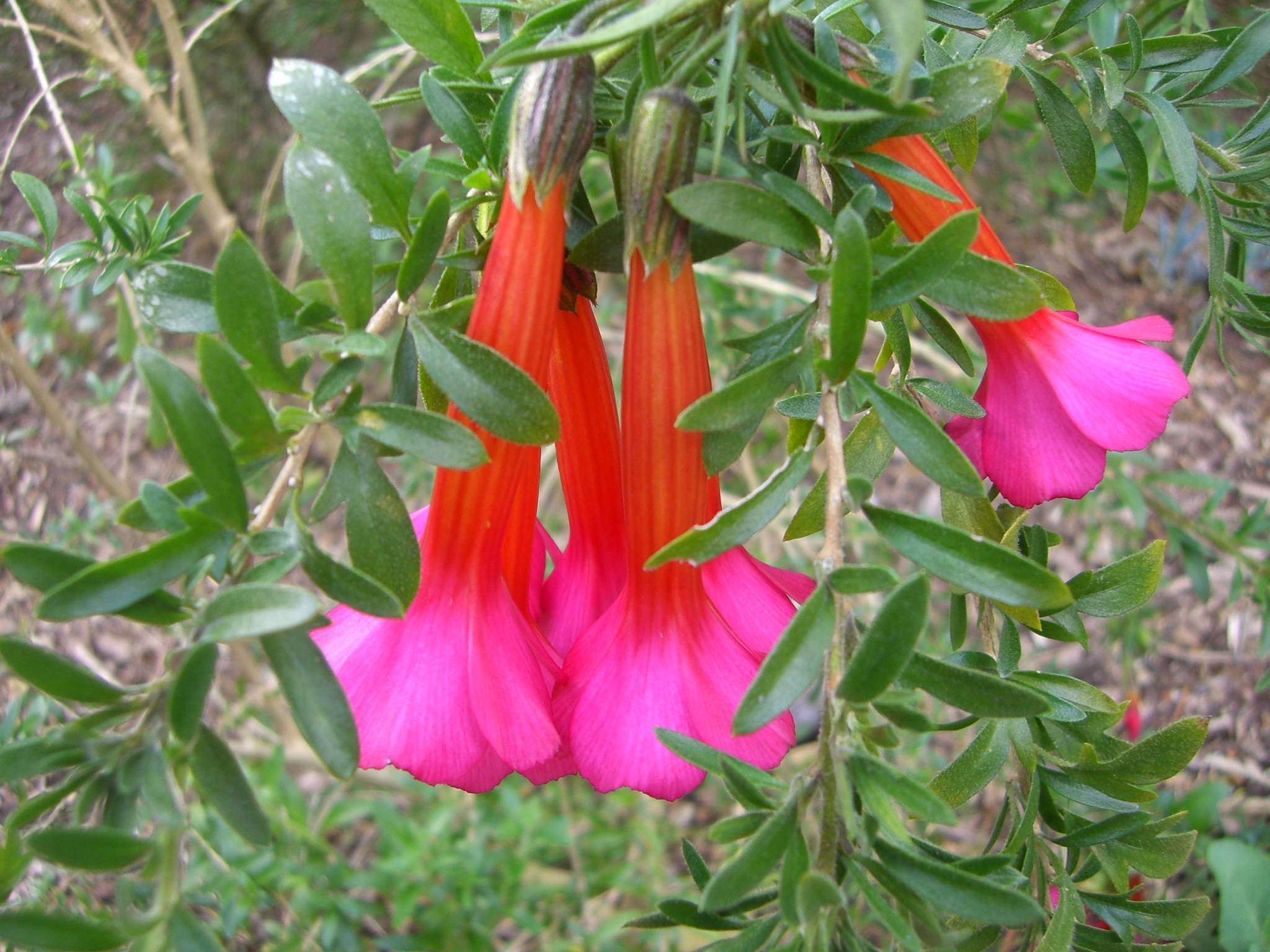
Mostly perennial or annual herbs, occasionally shrubs, climbers (Cobaea) or small trees. Leaves simple or compound, alternate or opposite (Linanthus, Phlox), divided or pinnate, rarely whorled; stipules mostly absent. Flowers solitary or in head-like cymes, bisexual. Sepals 5, united at the base. Corolla regular or 2-lipped, mostly 5-lobed. Stamens 5, attached to the flower tube, alternating with the lobes, sometimes at different levels in the tube. Ovary superior, of mostly 3, rarely 2 or 4 united carpels with 3 chambers, the ovules with axile placentation. Fruit a capsule, usually splitting lengthwise, the seeds often mucilaginous when wet.
The family Polemoniaceae is known to horticulture largely through the genus Phlox, which is not widely grown in Australia, the tropical genera being predominantly woody. Recent molecular and morphological sttudies indicate that the family is most closely related to Ericaceae and Fouquieriaceae. Cobaea is sometimes placed in its own family, Cobaeaceae.
Two species are naturalised in NSW: Collomia grandiflora Lindl. from N America, an annual weed of disturbed areas growing to 1 m tall with buff or pink flowers; and Navarretia squarrosa (Eschsch.) Hook. & Arn., Californian Stinkweed, a spiny annual with pale lilac to blue flowers.
Stamens fused to the petals; ovary of 3 united carpels forming a loculicidal capsule.
About 20 genera and 275 species from America and Eurasia.
Ingram (1959b).
Source: (2002). Polemoniaceae. In: . Horticultural Flora of South-eastern Australia. Volume 4. Flowering plants. Dicotyledons. Part 3. The identification of garden and cultivated plants. University of New South Wales Press.
Updated by: Val Stajsic, March 2019
